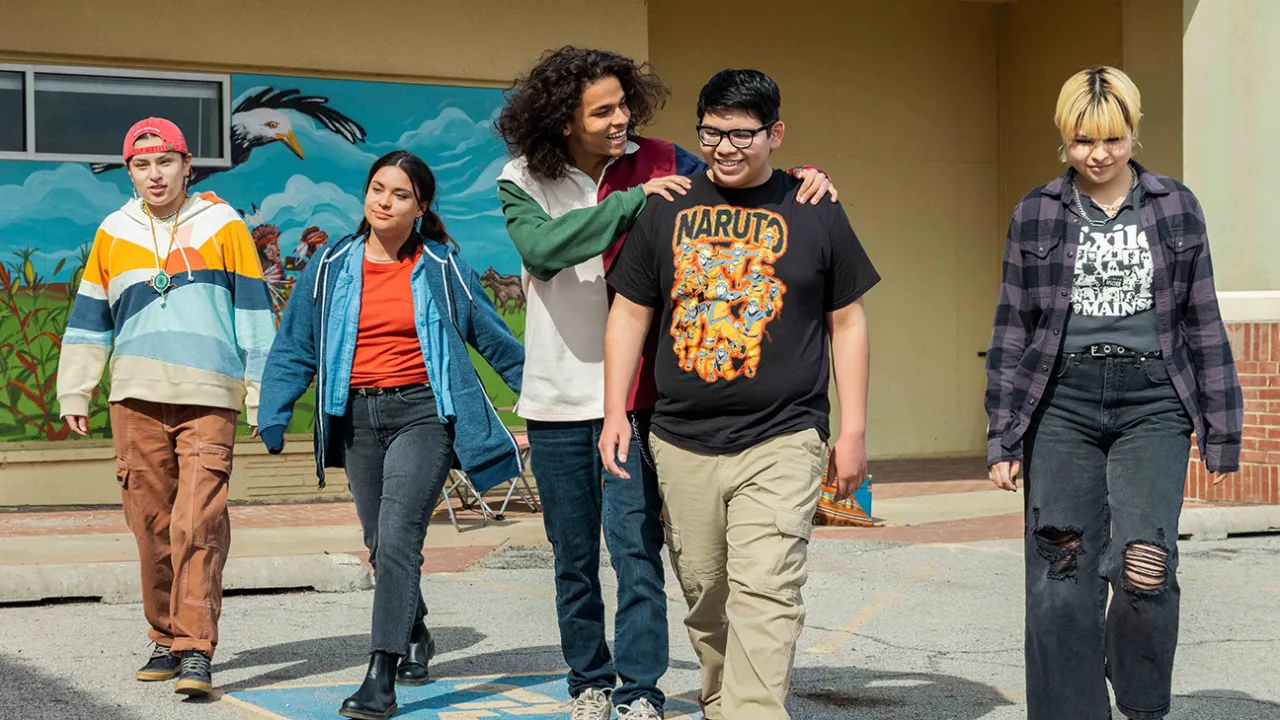
- Details
- By Levi Rickert
From the release of the first episode, Indian Country knew FX’s groundbreaking series “Reservation Dogs” was a special television series. At last there was television that depicted lives of contemporary Native Americans on screen navigating life in rural Indian Country.
The hard work of “Reservation Dogs” creator Sterlin Harjo (Seminole/Muscogee) and all of the other talented Native American writers, actors. and production crew who worked on the series has paid off.
A week after the finale of series was released on September 26, 2023, Hollywood Reporter critics on Thursday named “Reservation Dogs” its No.6 pick on the best television shows of the 21st century (so far).
"There has never been a collection of stories quite like Sterlin Harjo’s Reservation Dogs," the "Hollywood Reporter" writes.
The series followed the lives of four Native American teenagers living in rural Oklahoma, first premiered in 2021 and was an immediate hit among critics and audiences alike.
This is what the Hollywood Reporter said about “Reservation Dogs”:
There has never been a collection of stories quite like Sterlin Harjo’s Reservation Dogs. It’s not merely that Indigenous teen characters are a demographic rarely depicted on television, though they are; nor is it just that their plotlines here shrug off centuries of stereotypes about Native Americans, though they do. It’s the way these tales are told, with boundless curiosity and a freewheeling sense of experimentation.
The show allows for oddball visitors from the spirit plane, ventures with equal confidence into the boozy pleasures of a work conference and the painful history of Indian boarding schools, sets joy beside grief and mingles the mundane with the magical. Any single episode might put you in stitches over the obliviousness of a would-be influencer or in tears over the collection of departed ancestors watching over our characters in the here and now. Collectively, they build a world that feels as lived-in and as distinctive as any home.
More Stories Like This
Zuni Youth Enrichment Project Takes Top Emerging Artist Apprentices to Phoenix for Artistic Exploration and Cultural ImmersionFrom Dishwasher to Award-Winning Chef: Laguna Pueblo's Josh Aragon Serves Up Albuquerque's Best Green Chile Stew
Rob Reiner's Final Work as Producer Appears to Address MMIP Crisis
Vision Maker Media Honors MacDonald Siblings With 2025 Frank Blythe Award
First Tribally Owned Gallery in Tulsa Debuts ‘Mvskokvlke: Road of Strength’
Help us defend tribal sovereignty.
At Native News Online, our mission is rooted in telling the stories that strengthen sovereignty and uplift Indigenous voices — not just at year’s end, but every single day.
Because of your generosity last year, we were able to keep our reporters on the ground in tribal communities, at national gatherings and in the halls of Congress — covering the issues that matter most to Indian Country: sovereignty, culture, education, health and economic opportunity.
That support sustained us through a tough year in 2025. Now, as we look to the year ahead, we need your help right now to ensure warrior journalism remains strong — reporting that defends tribal sovereignty, amplifies Native truth, and holds power accountable.
 The stakes couldn't be higher. Your support keeps Native voices heard, Native stories told and Native sovereignty defended.
The stakes couldn't be higher. Your support keeps Native voices heard, Native stories told and Native sovereignty defended.
Stand with Warrior Journalism today.
Levi Rickert (Potawatomi), Editor & Publisher

